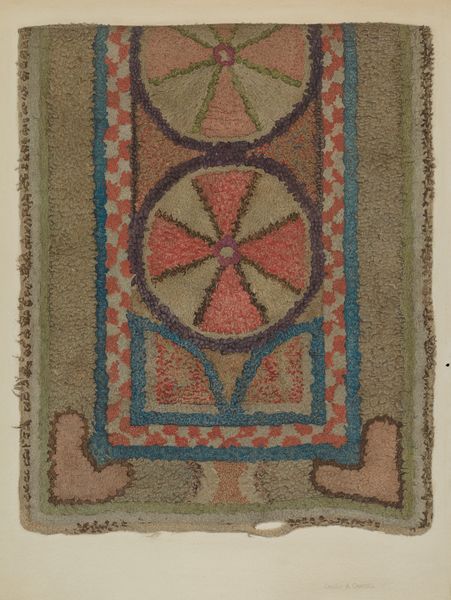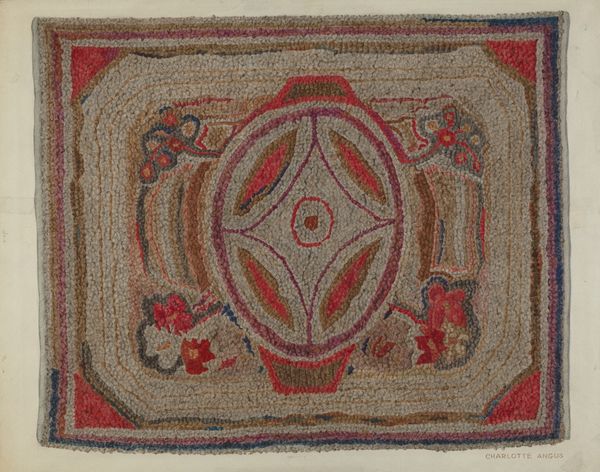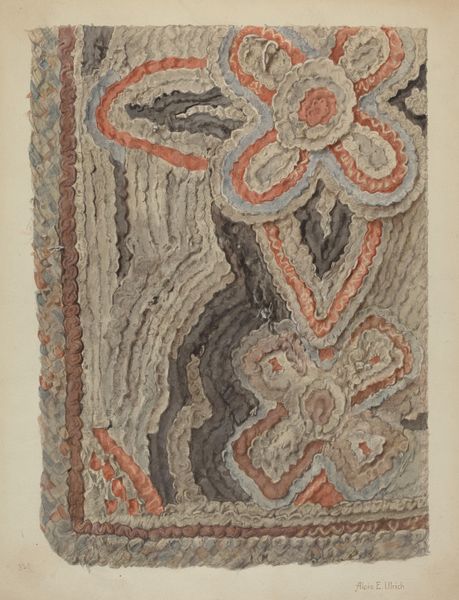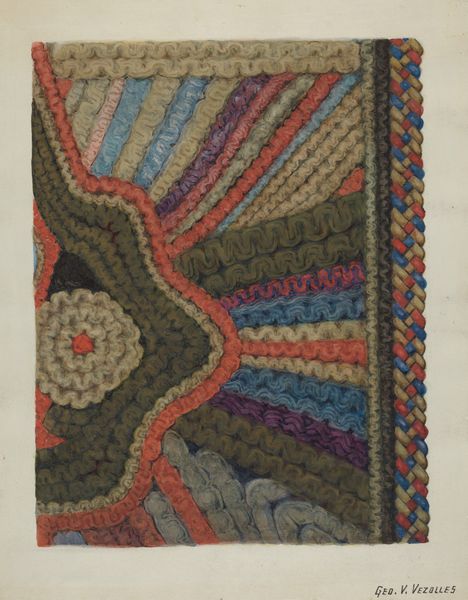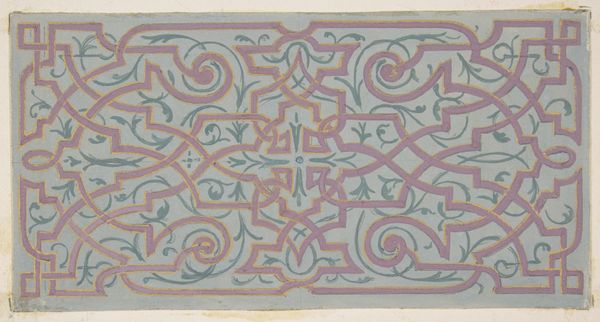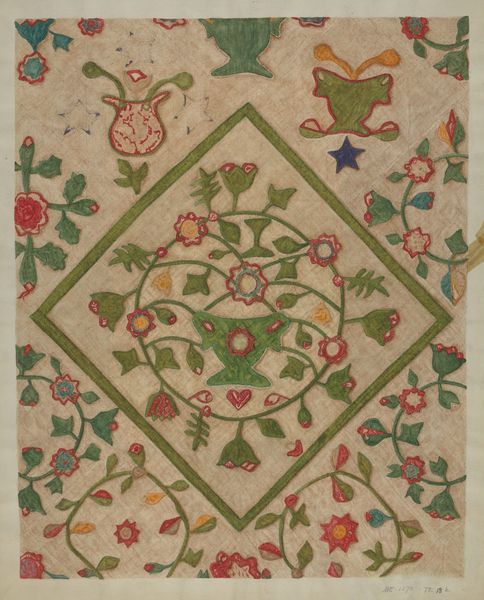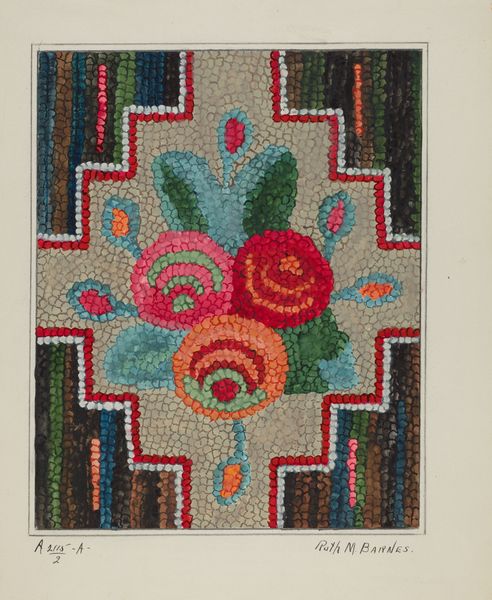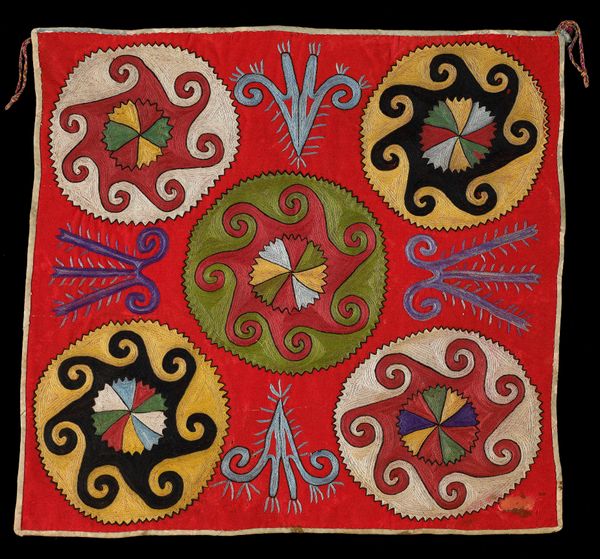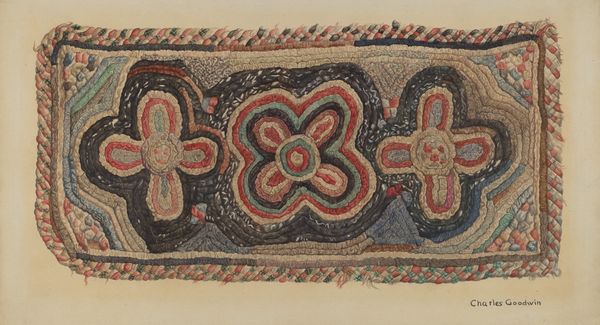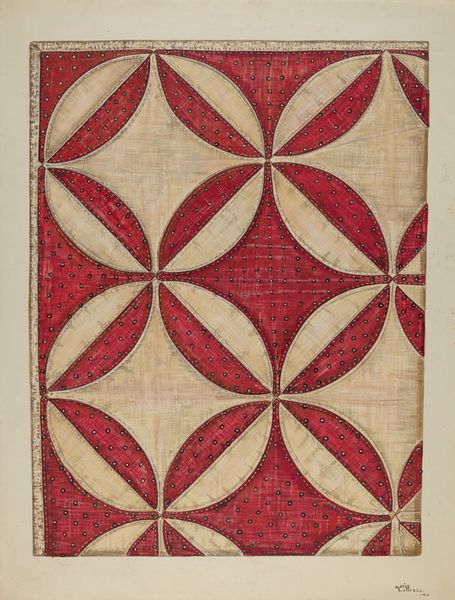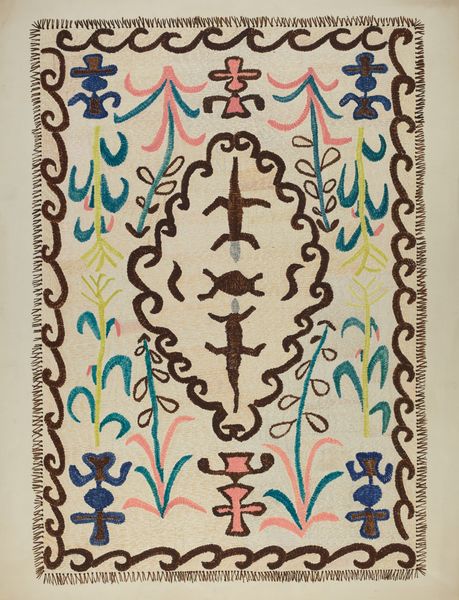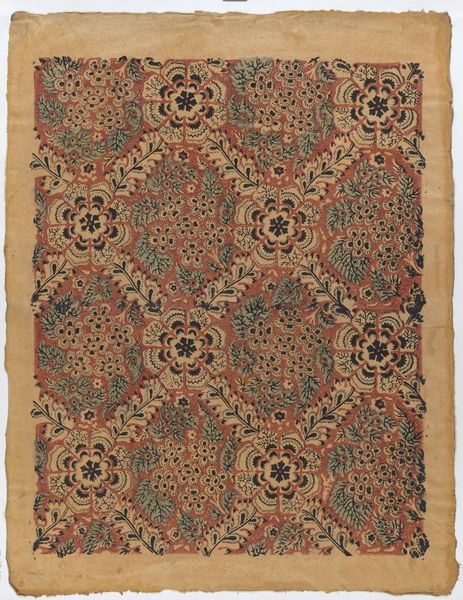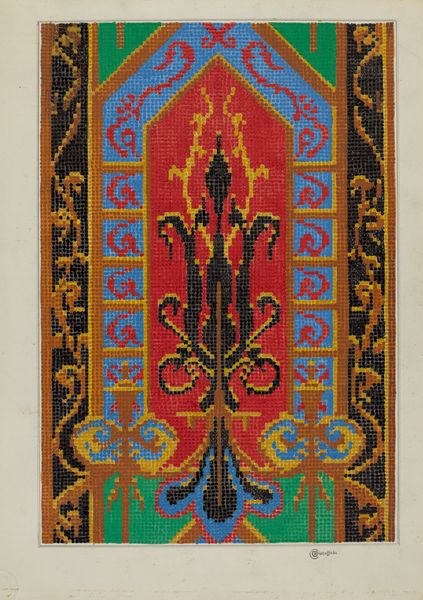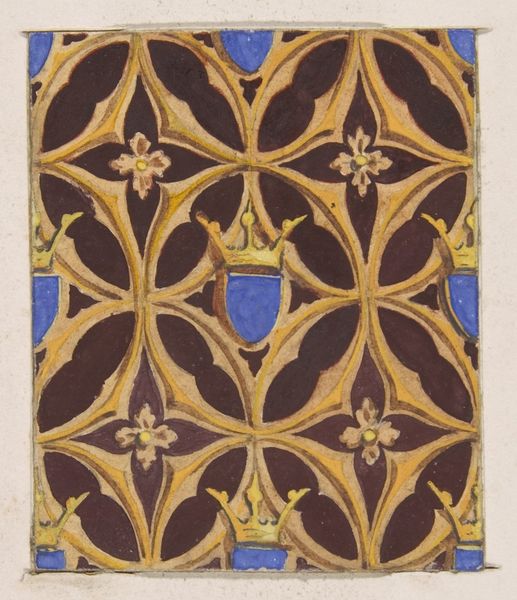
drawing, fibre-art, textile
#
drawing
#
fibre-art
#
textile
#
geometric pattern
#
folk-art
#
geometric
Dimensions: overall: 56.8 x 39.6 cm (22 3/8 x 15 9/16 in.)
Copyright: National Gallery of Art: CC0 1.0
Editor: This is "Shaker Rug," dating from between 1935 and 1942, by George V. Vezolles. I’m struck by the colours; they’re muted but really complex, and that braided border gives a sense of folk tradition. How do you interpret this work, particularly in light of its Shaker origins? Curator: Indeed, the symbols speak volumes. The central star-like motif, repeated but with variations, immediately brings to mind themes of unity and interconnectedness that were core to Shaker beliefs. Notice how the colours, though muted as you mentioned, create a calming yet subtly vibrant effect. Do you find the geometric nature comforting, or perhaps restrictive? Editor: I see it as both, in a way. The strict geometry reflects a structured, perhaps disciplined life, but the slight variations in color and form suggest individuality within that structure. Curator: Precisely! The Shakers valued both communal living and individual expression, often through craftsmanship. This rug isn't just a utilitarian object; the textile's patterns echo those seen in Shaker dances, spiritual mappings of collective experience and striving towards higher ideals. It makes you consider, doesn't it, how the seemingly simple carries complex emotional weight and intention? Editor: It really does. I hadn't considered the connection to dance and spiritual mapping, but now I see how the visual echoes reinforce the community’s beliefs and practices. Thank you! Curator: My pleasure. It's fascinating to consider how such an object served as both an everyday item and a symbolic reminder of their faith and cultural identity. The continuous line of the braided border perhaps suggests endless devotion.
Comments
No comments
Be the first to comment and join the conversation on the ultimate creative platform.
